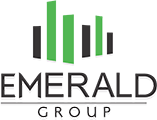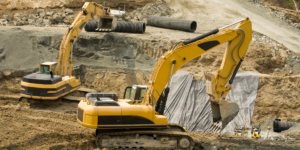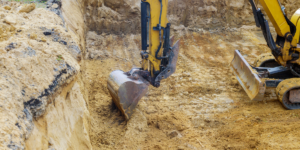Introduction
A construction cost estimate development plan is key to delivering high-quality cost estimates. This plan is implemented every time we start working on a cost estimate.
We adjust the plan to fit the current cost estimate requirements and make changes to our plan as we learn what works and what does not.
-
- Implement a system
-
- Adjust for better performance
If we follow these two steps with every cost estimate we develop, we will increase the quality of our work as cost estimators and improve our efficiency.
The Challenges
Your biggest challenges as a cost estimator:
-
- Availability of accurate and complete project information
-
- Have access to cost data
-
- Produce a cost estimate which meets the expectations of the review team
-
- Meet the deadline for the cost estimate completion
-
- Validate the cost estimate
To achieve the goal of developing a high-quality cost estimate, the cost estimator has to overcome these challenges. The key ingredient here is to prepare and implement a cost estimate development plan.
Overcoming the Challenges
Here are the steps we want to implement to overcome those challenges:
-
- Plan the cost estimate development activities
-
- Measure the performance
-
- Ask for feedback from the review team.
-
- Adjust your plan for the next cost estimate.
-
- Rinse and repeat!
The Strategy for Achieving High-Quality Cost Estimates
Drawing from my many years of cost estimating experience and based on feedback I received from many cost estimators, the following are my recommendations:
1. Review all available project documentation.
Before we start working on a cost estimate, we need to understand the project scope. We also need to understand if the available documentation is complete to answer our questions related to the project scope of work, technical requirements and commercial terms and conditions.
When we review the project documentation and throughout the cost estimate development steps, we want to:
-
- Ask for clarifications
-
- Take notes of all missing/incomplete information
-
- Set up a request for clarifications registry
-
- Set up a risk/opportunity registry and add all relevant information
-
- Make it a habit to review documents for all specifications which might have an impact on the cost
-
- Build up the project in your mind theatre and take the time to see the big picture
2. Define the purpose of the cost estimate.
Not all cost estimates are created equal. Depending on the end-use of the cost estimate, the time and effort that go into developing the cost estimate vary.
-
- Is the cost estimate required for a tender submission?
-
- Or is it a cost estimate for a budget on a project? If this is the case, what is the expected accuracy?
3. Set up the Cost Estimate Development Kick-off Meeting.
In the vast majority of cases, the cost estimator will go through a cost estimate review meeting once the cost estimate is complete. Who is part of such a meeting depends from company to company and from cost estimate to cost estimate. Regardless, the cost estimate review meetings are an important step in the cost estimate validation process, so we do not want to take any chances. This is why we must prepare ahead of time and increase the chances of delivering to the expectations of the review meeting participants.
Here are my recommendations to follow a successful kick-off meeting, step-by-step:
-
- Invite all cost estimate review team members
-
- Feel free to invite construction professionals within the organization you are part of; they might have valuable input
-
- Discuss:
-
- Constructability methods
-
- Price sourcing strategy
-
- What scope of work will be subcontracted?
-
- What scope of work will be self-performed?
-
- How many quotations will be required to validate a price?
-
- Price sourcing strategy
-
- Discuss:
4. Develop the cost estimate schedule.
If we do not have a plan, most likely, we will fail. The cost estimate development schedule is the most important item every cost estimator needs to create for every cost estimate. Why? It gives us insight into the effort required to develop the cost estimate and the roadmap to get there in time. Most likely, your cost estimate has a deadline. You want to assure yourself and all other parties involved in the process that such a deadline is achieved. For that to happen, this is what I recommend:
-
- List all activities required to be performed to complete the cost estimate.
-
- Estimate the time required for each activity.
-
- Build the schedule logic and determine the milestones.
-
- Determine the resources required for the cost estimate completion.
-
- Communicate with management regarding resource requirements.
-
- Build0in time for cost estimate reviews.
You will be surprised by the insights such a schedule can provide. Armed with such a schedule, you will be in a position to monitor the process, signal any shortcomings and request additional help if needed.
If you ask career cost estimators, most of them list the lack of time as the most impactful obstacle in achieving high-quality cost estimates. Rushing through at the last minute to complete the cost estimate is dangerous because mistakes can be made and decrease the level of confidence in the cost estimate quality overall.
5. Develop the Work Breakdown Structure.
One of the key ingredients of a great cost estimate is the work breakdown structure. I will not go into detail about why this is the case here. At a high level, a great WBS will have to meet the following requirements:
-
- The tender closing and submission
-
- The cost estimate review process
-
- The price sourcing strategy
-
- The construction methodology
-
- The estimate validation and benchmarking
-
- The internal database structure
I cannot tell you how often I have encountered cost estimators who do not grasp this concept. If you want to be great at what you do, keep the points listed above in mind when developing the WBS for each estimate. It will save you a lot of stress during and after the tender closing while giving the cost estimate review team the confidence they need to make recommendations for changes and validate the cost estimate.
6. Develop the cost estimate.
By now, you will be well prepared to start working on the cost estimate by following this sequence:
-
- Develop the quantity take-offs based on WBS and price sourcing strategy
-
- Develop the direct costs
-
- Develop the indirect costs based on the preliminary construction schedule
-
- Optimize resources
-
- Update costs as they become available from subcontractors and suppliers
-
- Incorporate all additional information if applicable (changes to the project documents, clarifications, etc.)
-
- Price and incorporate risk items as applicable
-
- Review the cost estimate draft with the review team
-
- Update the cost estimate as per review recommendations
-
- Update costs as more information become available from subcontractors/suppliers. You will see that this step will most likely be active until very close to the tender closing time.
-
- Perform the final cost estimate and tender submission review.
As with all processes, we will want to amend and improve the cost estimate development plan. With each cost estimate and tender we close, we learn what works and what does not work for our specific circumstances. This plan is not intended to answer all cost estimate development steps but to provide a baseline.
Delivering high-quality cost estimates is a skill that can be learned. If you are interested in learning cost estimating, spet-by-step and in a format that follows a teaching and training format, please check out my courses on cost estimating. Each course has a few free lessons, so you do not have to commit to paying unless you feel the course is right for your learning objectives.
Best of luck with all the cost estimates you will be working on. Have any feedback? I will be happy to hear from you. Please use the space below to leave a comment.
Thank you for reading!






One Response
Hi Doug,
Happy to see you stopped by my website!
Thank you for your comment. Point taken! I will add your suggestion and reference it to the EPCM format for cost estimating. The short guide I put together is in reference to a contractor’s approach, generally when bidding on a project. Regardless, your point is very valid.
Thank you,
Doina